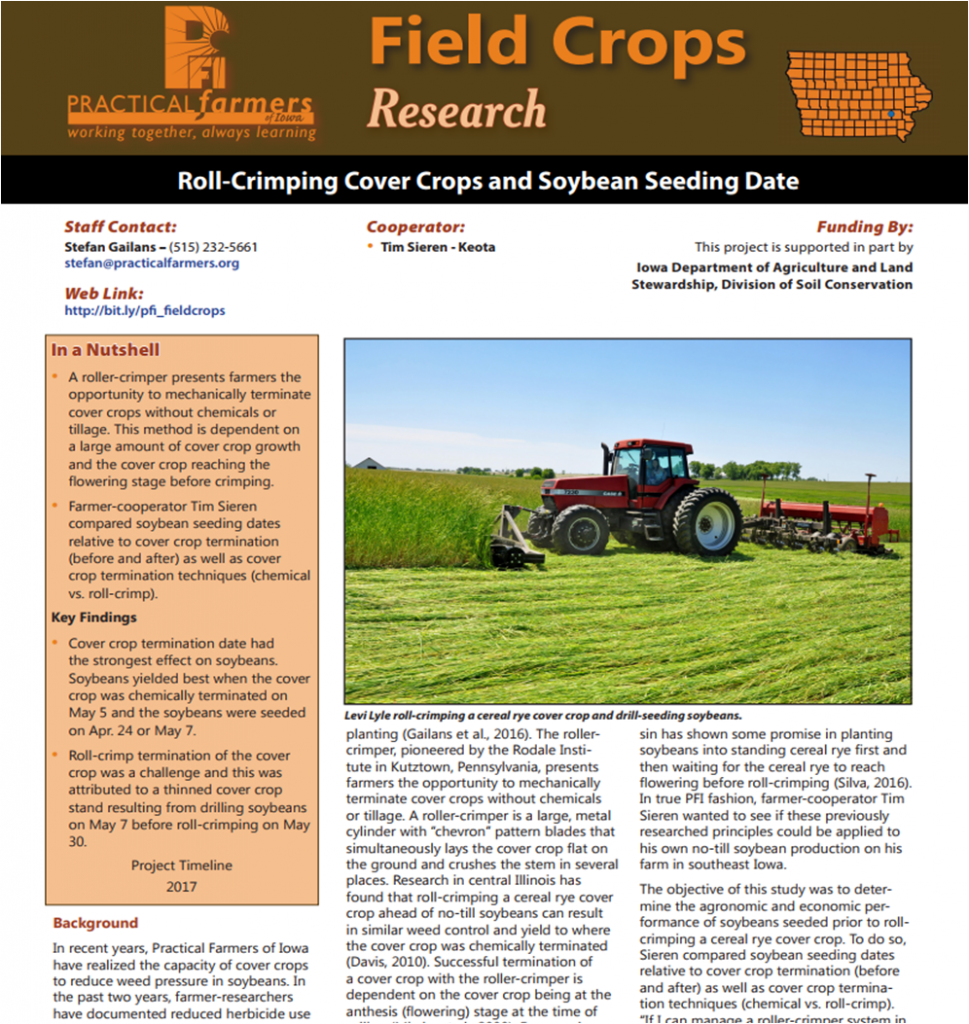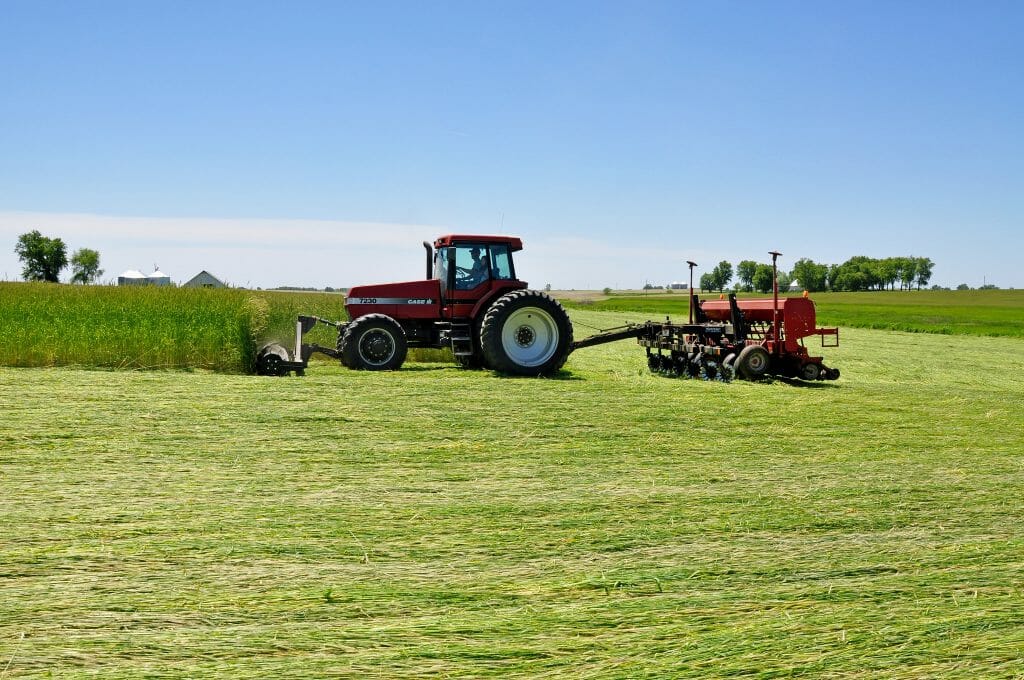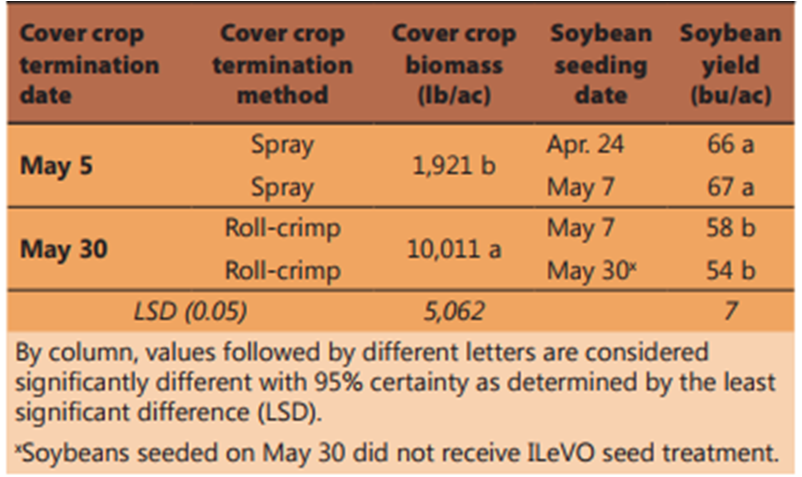RESEARCH REPORT: Roll-Crimping Cover Crops and Soybean Seeding Date
A roller-crimper presents farmers the opportunity to mechanically terminate cover crops without chemicals or tillage. This method is dependent on a large amount of cover crop growth and the cover crop reaching the flowering stage before crimping. A roller-crimper is a large, metal cylinder with “chevron” pattern blades that simultaneously lays the cover crop flat on the ground and crushes the stem in several places. Successful termination of a cover crop with the roller-crimper is dependent on the cover crop being at the anthesis (flowering) stage at the time of rolling. For cereal rye, this flowering stage is likely to occur in late May in Iowa.
Farmer-cooperator Tim Sieren compared soybean seeding dates relative to cover crop termination (before and after) as well as cover crop termination techniques (chemical vs. roll-crimp). “If I can manage a roller-crimper system in soybeans, while maintaining yields,” Sieren said, “I could drastically reduce herbicide use.”
Read the full report here: Roll-Crimping Cover Crops and Soybean Seeding Date.
How was the trial conducted?
This trial was conducted by Tim Sieren of Green Iron Farm near Keota in Washington County. Treatments included:
- Plant-then-spray: plant soybeans (Apr. 24), then spray the cover crop (May 5)
- Spray-then-plant: spray the cover crop (May 5), then plant soybeans (May 7)
- Plant-then-roll: plant soybeans (May 7), then roll the cover crop (May 30)
- Roll-then-plant: roll the cover crop (May 30), then plant soybeans (May 30).
Findings
Soybean yields were mostly affected by cover crop termination date (table below). Regardless of soybean seeding date, yields were greater on average by 10.5 bu/ac when the cover crop was terminated with herbicide on May 5 compared to roll-crimping the cover crop on May 30.
Roll-crimping the cereal rye cover crop proved to be a challenge. “The rye needs to be roll-crimped before the planter goes through, not after,” Sieren said. “I didn’t have a heavy enough stand to crimp down, and stay down (possibly due to the May 17 hailstorm). It didn’t kill all the rye, and after 2 weeks, you couldn’t tell it had been crimped, and it stayed greenish until I finally hit it with glyphosate 2 weeks later. Then it died and the beans finally acted like they wanted to grow.”
When Sieren waited to roll-crimp the cover crop on May 30, soybean yields were similar between the May 7 and May 30 seeding dates, but they were also less than when the cover crop was chemically terminated on May 5. With the May 30 cover crop termination (roll-crimp), Sieren achieved yields equivalent to his county’s average with only a single in-season herbicide application on June 27.
For more details on this trial, read the full report: Roll-Crimping Cover Crops and Soybean Seeding Date. This project was supported by the Iowa Department of Agriculture and Land Stewardship, Division of Soil Conservation.
For more information about this study and other studies as part of PFI’s Cooperators’ Program, contact Stefan Gailans at stefan@practicalfarmers.org



